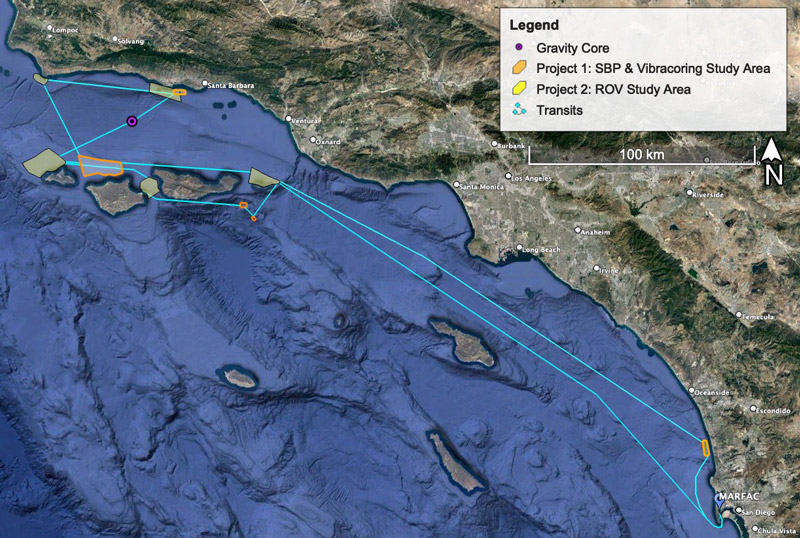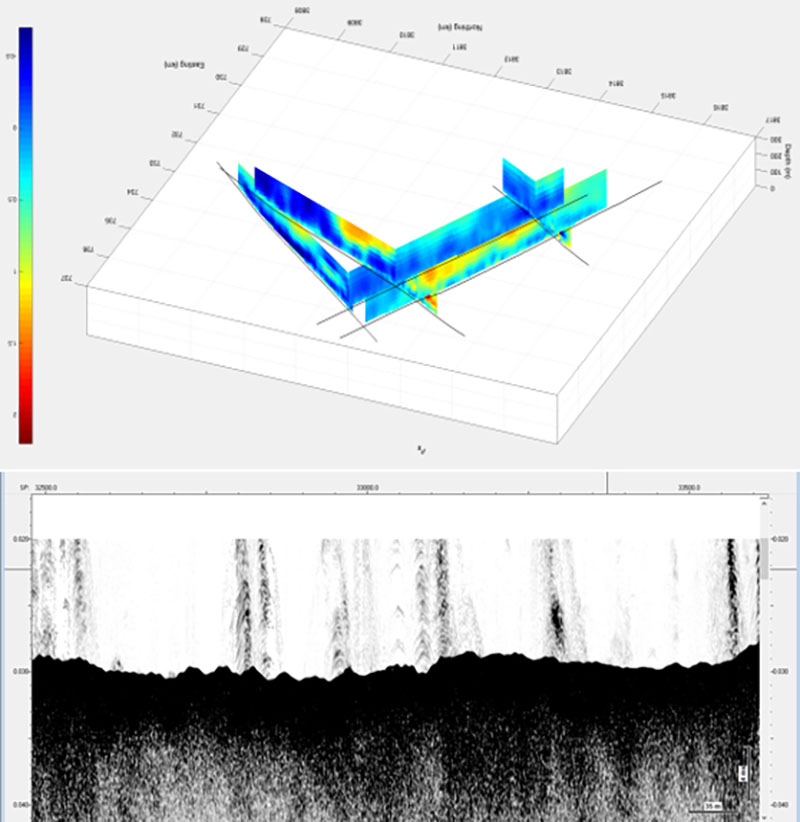Project Overview
From January 2-12, a team of researchers will carry out a multipronged expedition to explore and develop best practices for collecting materials from submerged tar seeps and surrounding sediment.
The Student Explorations Around Southern California: Acoustics, Paleolandscapes, and Environments at Sea (SEASCAPES) expedition team will use data collected during geophysical surveys conducted in earlier phases of the expedition to identify remotely operated vehicle dive sites to explore various ocean conditions and tar seep types such as asphalt volcanoes and dispersed inactive tar mats. They will test the preservation and material types associated with different seep types and the effect of various ocean and seafloor conditions on sampling operations. The imaging and analyzed data collected during the expedition will be synthesized into the team’s existing models to further define the regional archaeological and biological landscapes of the Southern California Continental Shelf. Specifically, the team aims to identify areas that may contain preserved cultural heritage sites to inform heritage protection as well as environmental conservation and permitting.
A post-doctoral researcher and former graduate student will serve as the chief scientist for this part of the expedition, gaining ship time and the experience of directing an expedition together with other student leaders. The expedition is part of a larger collaborative project that is supervised by an all-female team of principal investigators. The larger project also involves expanding baseline knowledge about the Southern California Bight’s paleolandscape beyond the Channel Islands, understanding the acoustic landscape of the region, and developing a marine spatial planning tool that will support ship noise reduction efforts as well as the ecosystem-based management strategy of NOAA’s Channel Islands National Marine Sanctuary.




Published December 21, 2022